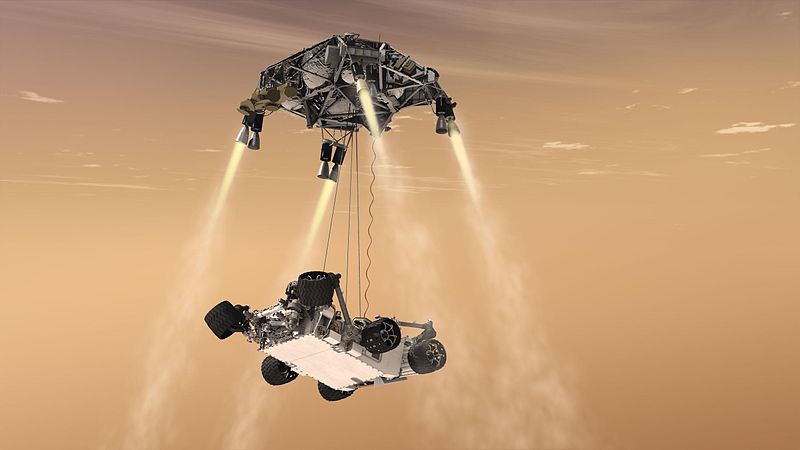Lêer:593484main pia14839 full Curiosity's Sky Crane Maneuver, Artist's Concept.jpg

Grootte van hierdie voorskou: 800 × 450 piksels. Ander resolusies: 320 × 180 piksels | 640 × 360 piksels | 1 024 × 576 piksels | 1 280 × 720 piksels | 2 500 × 1 406 piksels.
Oorspronklike lêer (2 500 × 1 406 piksels, lêergrootte: 161 KG, MIME-tipe: image/jpeg)
Lêergeskiedenis
Klik op die datum/tyd om te sien hoe die lêer destyds gelyk het.
| Datum/Tyd | Duimnael | Dimensies | Gebruiker | Opmerking | |
|---|---|---|---|---|---|
| huidig | 21:12, 4 November 2011 |  | 2 500 × 1 406 (161 KG) | Pline |
Lêergebruik
Die volgende bladsy gebruik dié lêer:
Globale lêergebruik
Die volgende ander wiki's gebruik hierdie lêer:
- Gebruik in ar.wikipedia.org
- Gebruik in ckb.wikipedia.org
- Gebruik in cs.wikipedia.org
- Gebruik in en.wikipedia.org
- Gebruik in eo.wikipedia.org
- Gebruik in es.wikinews.org
- Gebruik in fi.wikipedia.org
- Gebruik in fr.wikipedia.org
- Gebruik in ja.wikipedia.org
- Gebruik in ml.wikipedia.org
- Gebruik in no.wikipedia.org
- Gebruik in pl.wikipedia.org
- Gebruik in ro.wikipedia.org
- Gebruik in ru.wikipedia.org
- Gebruik in sh.wikipedia.org
- Gebruik in sk.wikipedia.org
- Gebruik in sr.wikipedia.org
- Gebruik in sr.wikinews.org
- Gebruik in ta.wikinews.org
- Gebruik in uk.wikipedia.org
- Gebruik in zh.wikipedia.org


